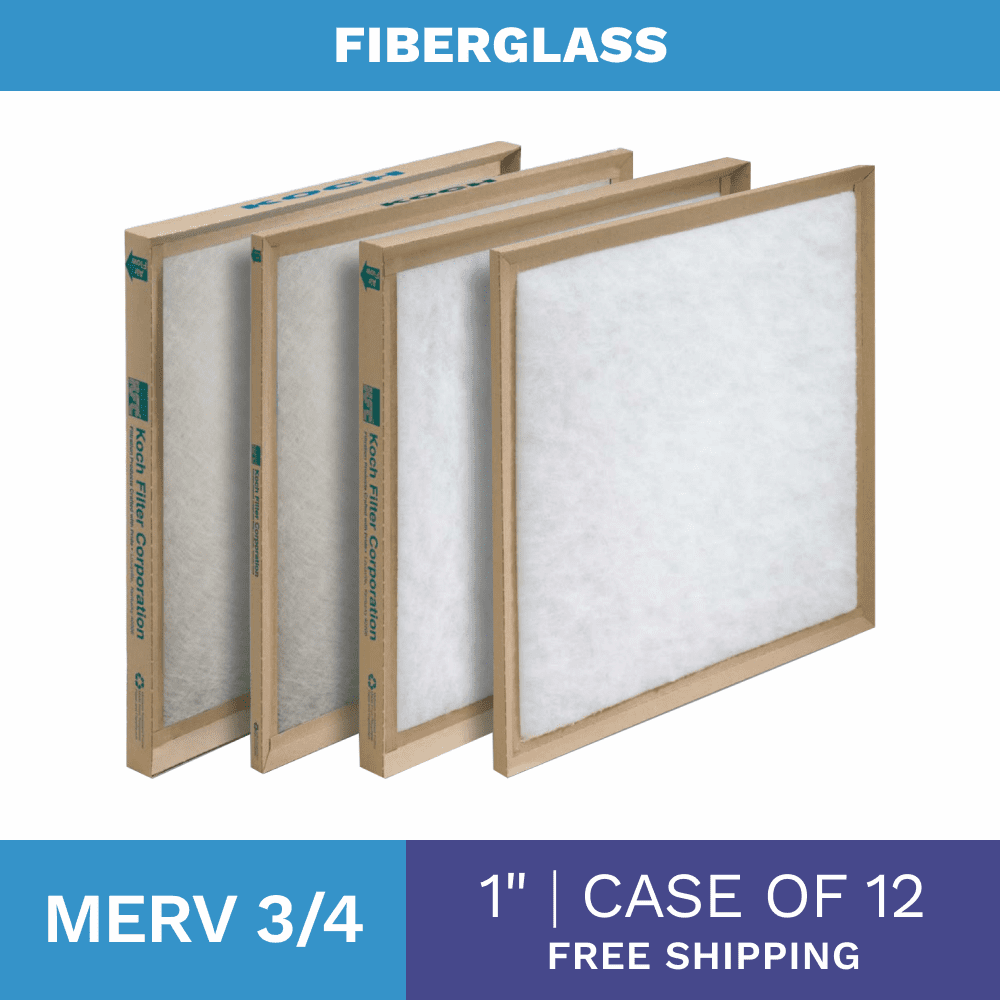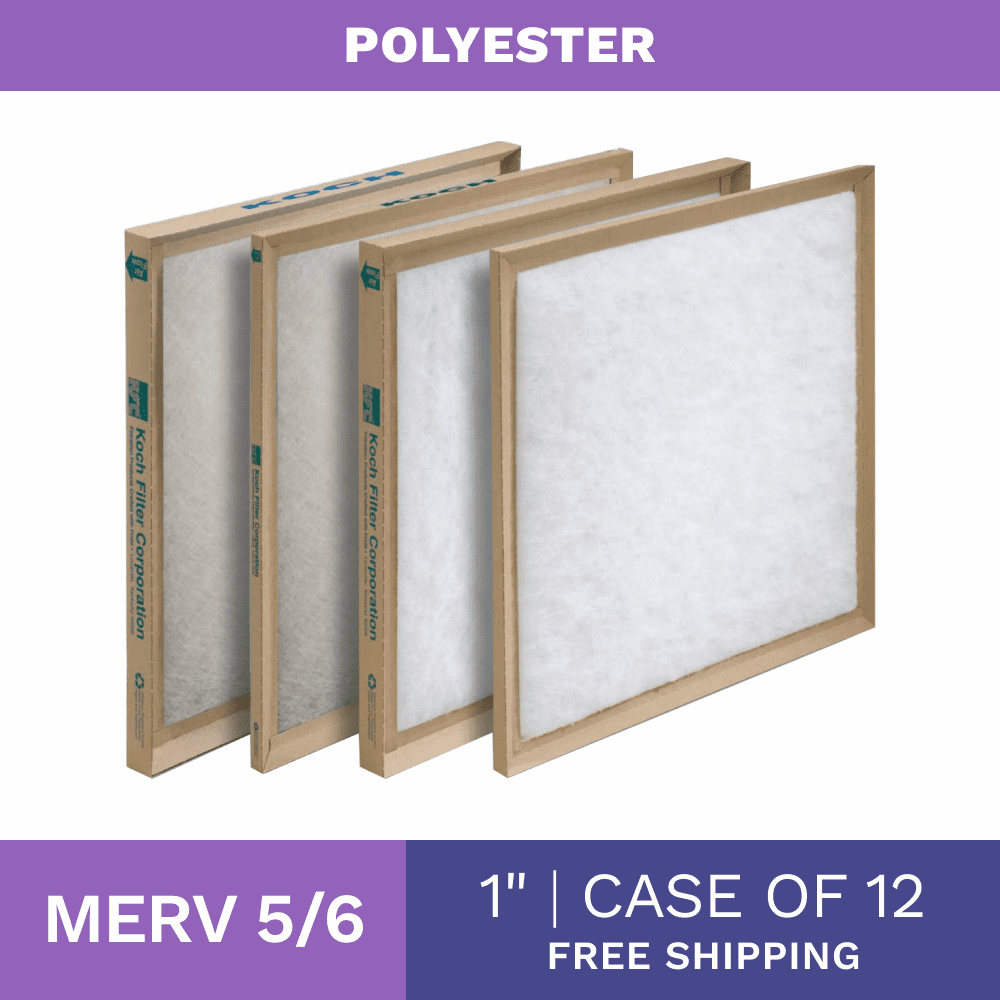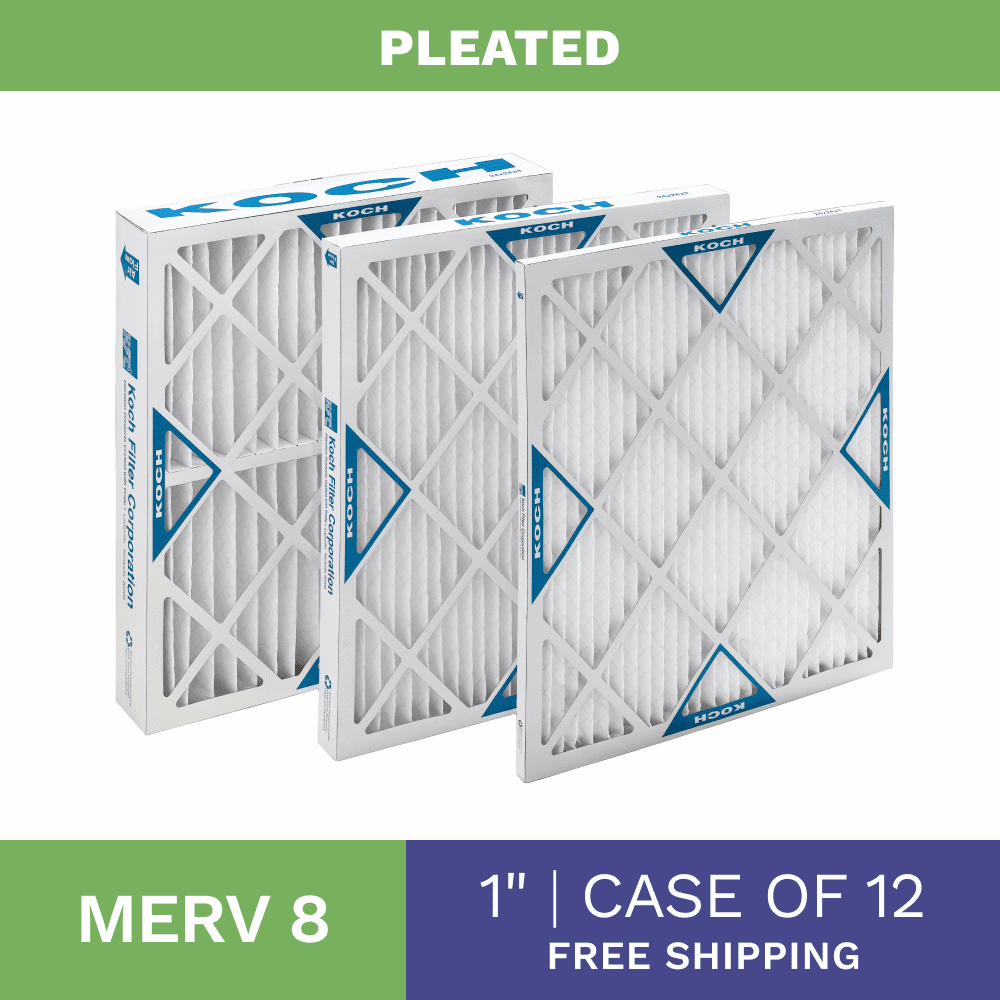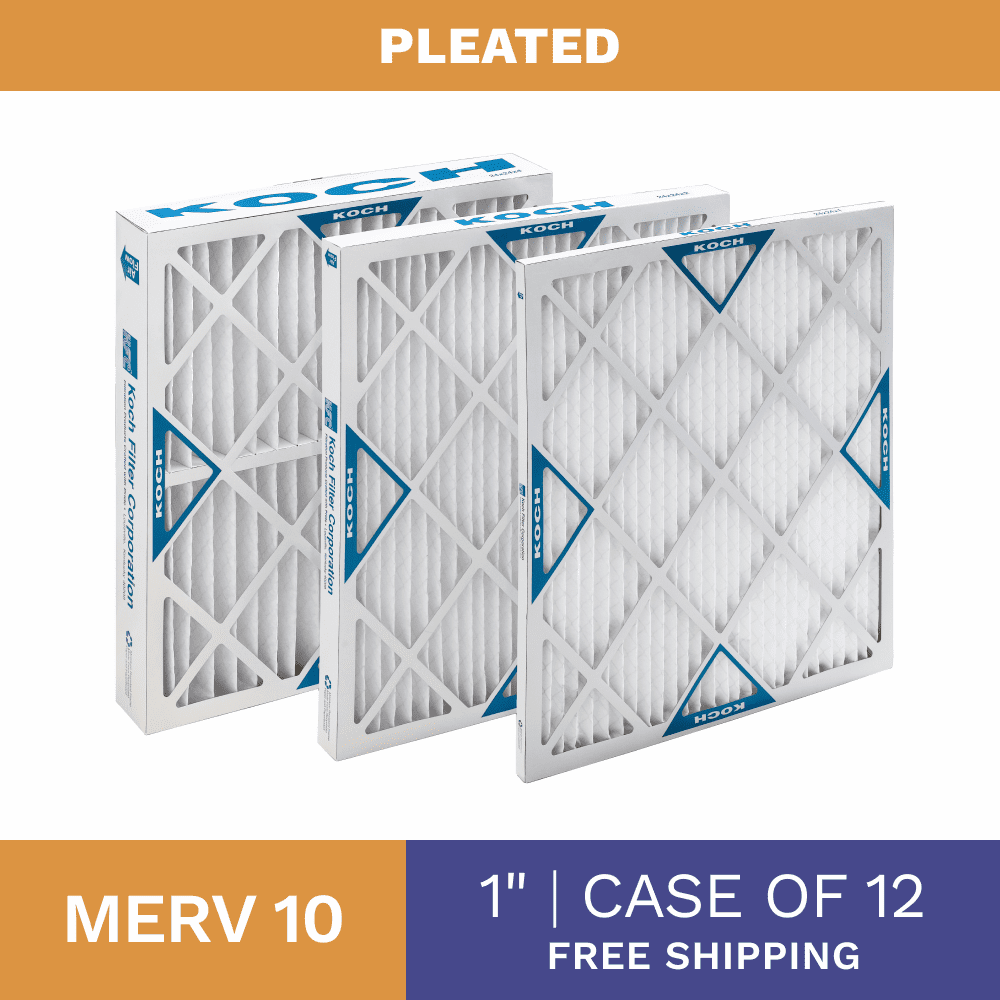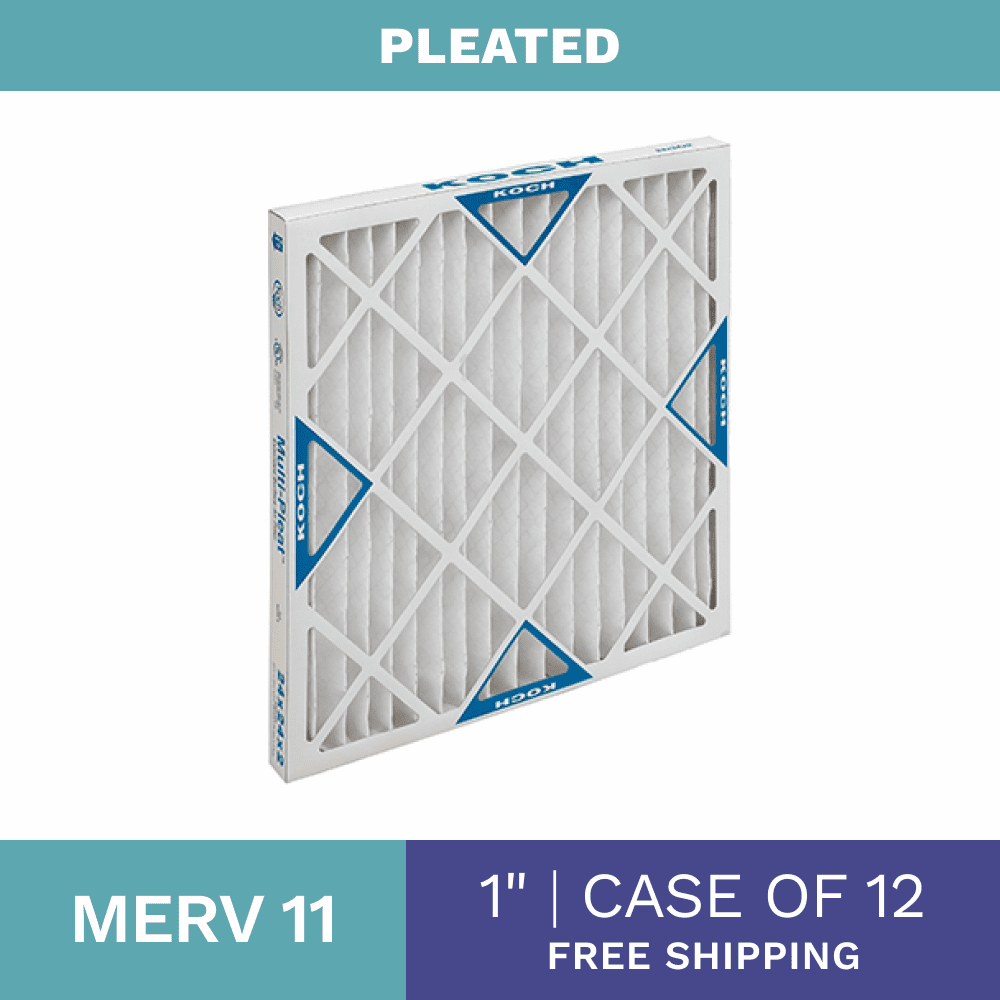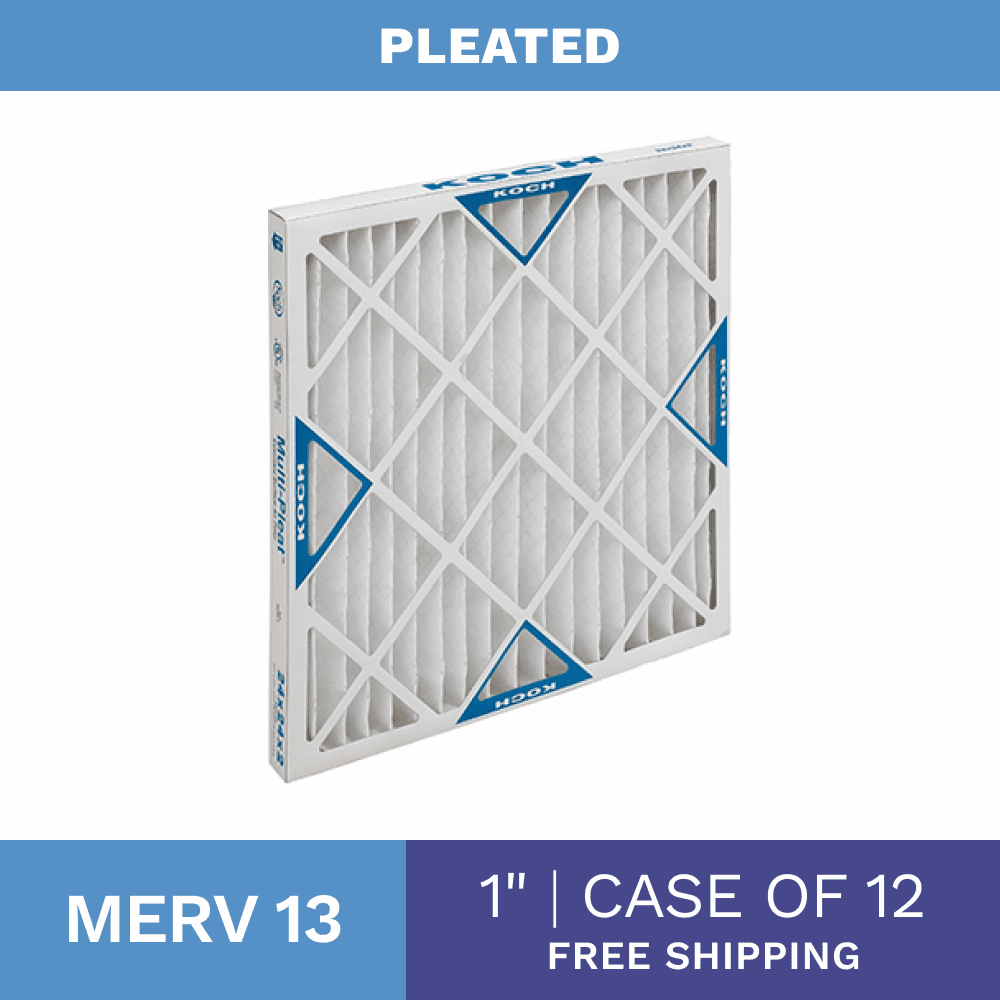
The EPA reports that 140 million Americans live in areas with pollution exceeding national air quality standards. It's no wonder that a survey by r-Zero found that 68% of Americans are concerned about indoor air quality.
If you're concerned about indoor air quality and are considering air filters or already using them, you've likely heard of MERV ratings.
But why do MERV ratings matter?
Selecting the right MERV rating (neither too low nor too high) enhances indoor air quality and reduces energy costs.
In this article, we'll explain MERV ratings and help you choose the best one for your needs.
What is MERV? Understanding the MERV Rating Chart
MERV stands for Minimum Efficiency Reporting Value. It's a rating system created by the American Society of Heating, Refrigerating, and Air-Conditioning Engineers (ASHRAE).
MERV rating is a measure of how well a filter can capture particles of different sizes. The higher the MERV rating on a filter, the more it can efficiently trap smaller particles. Filters with a lower MERV rating are more suited for trapping larger particles without clogging the system or restricting air flow.

Select Your Filter Rating Here
From the MERV rating chart above, it can be seen that MERV 3/4 are suited for capturing dust, pollen, and fibers, while MERV 5/6 can remove mold spores and pet dander. MERV 8, which is in the mid-range, can filter fine dust and smoke particles. MERV 10 is effective in eliminating bacteria and lead dust. MERV 11 can capture legionella bacteria and fine soot, while MERV 13 filters are suited for capturing viruses and tobacco smoke.
In summary, lower MERV ratings (1 - 4) are best suited for trapping larger particles like dust and dander, while the higher MERV ratings (13 - 16) are effective for trapping microscopic threats.
How Are MERV Ratings Determined for an Air Filter?
Air filters are given MERV ratings through a standard test that checks how well they capture particles between 0.3 and 10 microns in size.
This test follows the ASHRAE Standard 52.2, which measures the filter's ability to remove particles. Here's a quick look at the testing process:
- Efficiency Calculation: The filter's efficiency is calculated based on the percentage of particles it captures in each size range.
- Particle Size Measurement: Filters are tested for their ability to capture particles in three size ranges: E1 (0.3-1 microns), E2 (1-3 microns), and E3 (3-10 microns).
- Testing Process: A controlled air stream with particles from each size category is passed through the filter.
MERV Rating Range and Particle Size Efficiency
The MERV scale goes from 1 to 20. Understanding this scale will help you balance air quality with HVAC system efficiency.
How Small is a Micron?
The term "micron" comes up often when discussing MERV ratings. It's a way to measure very small particles, like air pollution, much like we use yards or miles to measure bigger distances.
A human hair is roughly 70 microns thick, so a micron is incredibly small, much smaller than anything we can see without a microscope.
The table below breaks down each rating range by its ability to trap particles and typical applications.
MERV Rating |
Particle Size Efficiency |
Description |
Common Applications |
|---|---|---|---|
MERV 1-4 |
Less than 20% for particles 3.0-10 microns |
A basic air filter – captures large particles like pollen and dust mites |
Residential window AC units, basic HVAC, commercial pre-filters |
MERV 5-8 |
20-70% for particles 3.0-10 microns |
Moderate efficiency air filter – captures airborne contaminants like mold spores, dust particles, spray paint dust, and pet dander |
Residential and light commercial buildings, industrial workplaces |
MERV 9-12 |
70-90% for particles 1.0-3.0 microns |
High-efficiency air filter – captures finer particles like lead dust, humidifier dust, tobacco smoke |
Superior residential, better commercial, and hospital laboratories |
MERV 13-16 |
90%+ for particles 1.0-3.0 microns, 75-95% for 0.3-1.0 microns |
Very high-efficiency particulate air filters – captures bacteria, asbestos particles, insecticide dust, and smoke |
Hospitals, general surgery, superior homes, smoking lounges |
MERV 17-20 |
99.97% for particles 0.3 microns and larger (HEPA level) |
Highest efficiency range – capture viruses and the smallest particles. They are nearly as effective as HEPA filters. |
Cleanrooms, pharmaceutical manufacturing, radioactive and carcinogenic materials |
Select Your Filter Rating Here
If you have decided on your MERV Rating, we've made choosing the right filter easy. Just select the MERV rating that fits your needs:
- For basic filtration, explore MERV 3-4 filters here.
- For moderate filtration, check out MERV 5-6 filters here.
- For better air quality, take a look at MERV 8 filters here.
- For more effective filtration, go with MERV 10 filters here.
- For advanced protection, consider MERV 11 filters here.
- For the highest level of filtration, choose MERV 13 filters here.
Read on if you want to dive deeper into MERV ratings.
MERV Rating Guide by Home Type
The right MERV rating for your home depends on how much pollution is around, any health issues, and whether you have pets or smoke indoors.
Let's break down these factors based on home location, medical condition, pet ownership, and smoking habit, and find the best MERV rating for your specific needs.
Home Location
Urban Areas:
Residents of big cities like Los Angeles, New York City, and Chicago often deal with higher pollution levels, including car exhaust, industrial emissions, and smog. PM2.5 pollution in these areas can range from 20 to 35 micrograms per cubic meter, sometimes even more.
If you live in a city where pollution is a concern, a MERV 11 or 13 filter is a good choice. These filters trap fine particles, such as vehicle and industrial emissions and airborne chemicals.
Suburban Areas
Smaller cities and suburbs generally have moderate pollution levels, with PM2.5 levels around 10 to 20 µg/m³.
A MERV 8 to 10 filter should work well. These filters capture common allergens like pollen, dust, and mold spores and are more energy efficient than higher-rated ones.
However, if your suburban home is near a busy road or an industrial zone where PM2.5 levels exceed 20 µg/m³, a MERV 11 to 13 filter is recommended.
Rural Areas
The air is cleaner in states like Vermont, Iowa, or Montana, with PM2.5 levels ranging from 5 to 12 µg/m³.
A MERV 8 filter is usually enough to capture larger particles like dust, pollen, and dust mites. But if you're near farms or areas with heavy agricultural activity, where PM2.5 might reach 12 to 15 µg/m³, a MERV 9 or 10 filter can offer sufficient filtration.
Medical Conditions
Keeping indoor air clean is important if you have asthma, allergies, or a weakened immune system. Exposure to dust mites, pollen, mold spores, pet dander, bacteria, and viruses can trigger asthma attacks, worsen allergies, or strain the immune system.
Asthma and Allergy Sufferers
A MERV rating between 11 and 13 is recommended to reduce airborne allergens and irritants.
- MERV 11: Traps particles like pet dander, fine dust, and mold spores. These filters work well in homes with pets or during high pollen seasons.
- MERV 13: Provides even better filtration, capturing particles as small as smoke and some bacteria. It's a great choice for people with severe allergies or asthma.
Low Immunity and Chronic Respiratory Conditions
For people with weakened immune systems or chronic respiratory issues like COPD, chronic bronchitis, pulmonary fibrosis, or a history of asbestos exposure, using a filter with a MERV rating between 13 and 16 is recommended.
- MERV 13-16: These filters capture smaller particles, such as bacteria (like Staphylococcus aureus), viruses (including influenza and COVID-19), smoke, fine dust, traffic pollutants, and asbestos fibers.
These filters help protect those with compromised lung function or immune systems from harmful airborne particles, reducing the risk of exacerbating their condition or developing respiratory infections.
Pet Owners
Pets bring extra allergens into the home, like dander, hair, and tiny skin flakes. A MERV rating of 8 to 11 can help control these pet-related allergens.
- MERV 8-9: These filters are effective in homes with pets. They capture larger particles, such as pet hair and some dander. These filters are a good option for managing common pet allergens in most homes.
- MERV 10-11: Higher-rated filters are recommended if you have pets and someone in the home is sensitive to pet allergens. These filters protect by trapping smaller particles, including more pet dander.
Smokers
Tobacco smoke leaves harmful residues that can linger in your home, causing long-term exposure to pollutants. PM2.5 particles can stay airborne or cling to surfaces and dust, remaining in the air for hours after smoking stops.
- MERV 11-12: These filters capture most tobacco smoke particles, some of which are 300 times smaller than a human hair. They also help reduce the lingering smell of tobacco smoke.
- MERV 13: For the most effective protection against tobacco smoke, MERV 13 filters are the best choice. They capture smaller smoke particles and reduce the pollutants that settle on indoor surfaces.
A high MERV rating protects non-smokers in the household from second-hand smoke and lowers the health risks associated with smoking indoors.
Select Your Filter Rating Here
MERV 8 vs 11 vs 13 Comparison
| Factor | MERV 8 | MERV 11 | MERV 13 |
|---|---|---|---|
| System Compatibility | ✅ Perfect for residential | ❌ Can strain residential systems | ❌ Can damage residential systems |
| Airflow Restriction | ✅ Minimal | ❌ Significant | ❌ Significant |
| Filter Lifespan | ✅ 60-90 days | ✅ 60-90 days or more | ❌ 30-45 days |
| Energy Efficiency | ✅ Maintains efficiency | ✅ Moderate energy consumption | ❌ Reduces efficiency |
| Cost Effectiveness | ✅ $6-8 per filter | ❌ $12-25 per filter | ❌ $15-25 per filter |
| Allergy Relief | ✅ Captures most allergens | ✅ Captures most allergens | ⚠️ Marginal improvement |
The Bottom Line
The air in your home is filled with particles-some visible, some too small to see.
The right filter is your shield, protecting against smoke, pet dander, and the tiny particles floating around you daily.
By choosing the right MERV rating, you're not just improving air quality but creating a safer, healthier environment. For top-tier filters that make a real difference, visit ACFilters4Less.com and take control of your indoor air today.
Need help choosing Your Filter? We Can Help!
With our USA-based expert support, we're here to help you choose the perfect filter rating, type, and size. Call us at 954-588-7774 for free, personalized advice on choosing the best MERV rating, based on:
- Your specific HVAC system requirements
- Your indoor air quality goals and health needs
- Your budget and replacement schedule preferences
- Your home's unique characteristics (size, pets, allergies)
No pressure, just expert guidance from people who care about your air quality.
USA-Based Expert Support - We answer the phone and provide real help, not automated responses. Call or text us, and you'll speak with one of our owners.
- 15+ Years of Experience - We've helped thousands of customers choose the right filters since 2011
- Guaranteed Lowest Prices - If you find a lower price, we'll match it. We'll match it
- Free Shipping on All Orders - No minimum purchase required
- Family Owned & Operated - Personal service from people who care about your family's air quality
Serving customers nationwide with special expertise in Florida's unique climate needs. Family-owned and operated since 2011, helping churches, HOAs, high-rise buildings, and homeowners choose the perfect filters for healthier indoor air.
Frequently Asked Questions(FAQs)
Are higher MERV ratings always better?
It's tempting to think that the higher the MERV rating, the better the air quality, but that's not always true.
Higher ratings can capture smaller particles, but they also create more resistance to airflow in your system. This means your HVAC unit has to work harder, which can drive up energy costs and even shorten the system's lifespan.
The key is balance-choosing a MERV rating that provides the air quality you need without overworking your system.
How often should I change my air filter?
The frequency of filter changes depends on the MERV rating and the conditions in your home.
Filters with higher MERV ratings trap more particles but usually must be replaced every 1 to 3 months to maintain proper airflow and system performance.
Check your filter every month; when it appears dirty or clogged, it's time for a replacement to keep everything running smoothly.
What MERV rating is best for stopping dust?
If you live in an area prone to larger particles like dust, lint, and pet dander, you should consider getting MERV 8-9. However, use MERV ratings 10-12 for finer dust conditions.
Overall, what MERV ratings are the best?
There's nothing like the best MERV rating; you should only consider getting a good one based on your environment and/or conditions. Most households use MERV 8-10, which captures basic particles like dust, pollen, and pet dander. However, people with allergies are often advised to get higher ratings like MERV 11-13. These have higher efficiencies in capturing and removing smaller particles like mold spores and smoke.



